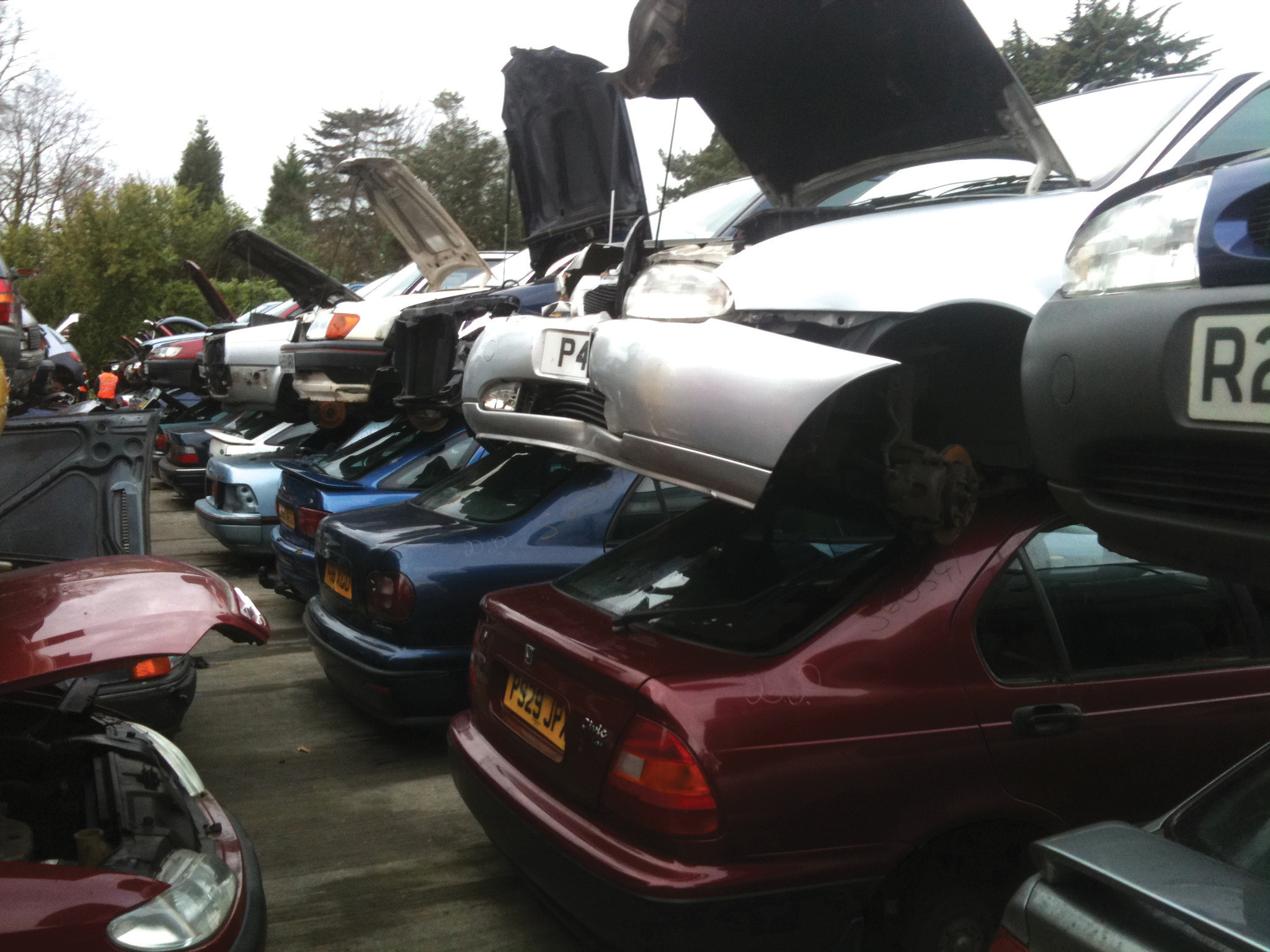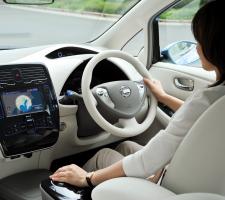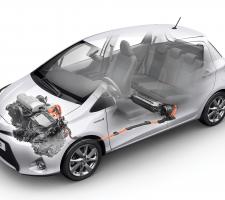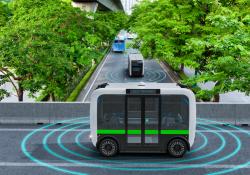
Convergence of electron-powered vehicles with connected vehicle technologies could mean that only a few decades from now the idea of owning a vehicle will be entirely alien to the road user. By
Enumeration of the influencing factors is difficult. There have been recent incursions into the ITS space by technologies and applications which few could have foreseen and even fewer expected. But vehicle end-of-life legislation, emission reduction targets, electron-based powertrains, connected vehicle solutions and developed versions of existing intelligent transport systems are perhaps the primary drivers for change within this context.
What we may end up with is a situation where instead of buying a vehicle outright, individuals acquire a mobility service for a period of time. At the end of the vehicle’s life, the service provider – the vehicle manufacturer – will then reclaim (in all senses of the word) ‘its’ vehicle. The service model has more in common with mobile telephony contracts than the agreements traditionally associated with automotives and transport.
End-of-life legislation
Over the past couple of decades some pretty fundamental end-of -life and recyclability legislation has been introduced across the vast majority of European manufacturing operations. The automotive sector has been no exception – legislation has dictated that ever increasing proportions of vehicles need to be recyclable, placing a greater onus on manufacturers to make sure waste products don’t simply end up in landfill. This has resulted in life-expired vehicles becoming easier to deal with, but also presages reclamation of powertrain and other componentry for commercial reasons.Emissions and powertrains
The increasing price of fuel and moves to reduce carbon emissions (in the EU, auto manufacturers are required to achieve average emission levels of 130g/km by 2015), are leading manufacturers to produce increasingly innovative ‘conventional’ power systems featuring highly efficient combustion and more use of electronics and power management to minimise loss of energy from the combustion process. There is also the requirement to more generally reduce polluting emissions, typified by innovations such as selective catalytic reduction (SCR) which uses ammonia (urea) to remove harmful NOx from exhaust gases. These changes typically require the application of more sophisticated manufacturing, processing and materials, with the result that the costs of new vehicles’ materials, design and build are all significantly increased.In a vehicle powered by fossil fuel, it’s very difficult to reverse the reaction that produces power when there’s an excess available, such as when braking. Traditionally, that power has just been wasted in the form of heat and noise. Hybrid and regenerative vehicles use battery or capacitive systems to capture that power for later use but hybrids are really only a stage; full-electron vehicles are now being sold, albeit for specific applications. Typically, both newer vehicle types contain far more electronic and computational elements as a result of the need to marshal these complex environments. Also, they’ve been designed and built in a time when these components require novel technologies and materials which are expensive and difficult to source – for instance, the rare earth magnets used in high efficiency electric motors.
Connected vehicles
Vehicles connected to their environments have been promised for so long that we almost missed it when it did happen. RDS-TMC already delivers traffic status data direct to the vehicle but cellular data services such as GPRS have enabled a whole generation of ‘live traffic’ services, with sat-nav systems being both producers and consumers of traffic data. That’s just the beginning. Significant numbers of smartphone applications are now available for mobility and implementations are emerging which reach right into the vehicle and communicate directly with onboard systems for a multitude of reasons. Especially on new vehicle stock, manufacturers are moving to incorporate connected functionality as standard. TheIntelligent transport systems
The final change, also well established, is the move towards embedded intelligence in transport infrastructure – whether that be smart signage providing city centre parking guidance or the backend systems that are monitoring queues at junctions and juggling signal priorities to minimise delays. Out-of-vehicle ITS also include dynamic bus timetables, tram prioritisation, applications which ensure there is always a taxi at a rank and those which govern traffic mix to manage air quality.So far, we haven’t done a great job of integrating ITS into the vehicle itself but that will change. Implications and demands Alongside all of this, the OEMs also want to maintain contact with their products beyond the point of sale – to retain highly lucrative servicing income and a greater chance of the followon sale. Leasing arrangements have existed for years but as we move towards electron vehicles we may see these ties binding even tighter, enabled by the technology embedded in vehicles and driven by the new fleets’ recycling and servicing requirements.
In addition, an increasingly information centric user community is starting to expect end-to-end service support rather than mere product delivery: they want to know where to park their cars so that they can be recharged while they catch the bus or train to reach their final destination; and they want to be told when a service is due, along with push-button booking arrangements.
These services can only be delivered through connected devices by multiple organisations working together to deliver one end product, a federated model which the OEMs have never traditionally had to deal with and which raises interesting challenges.
The short term
We can speculate about where these changes are taking us, but it’s certain that our view of mobility, especially in relation to personal vehicles, will be considerably different 20 years from now. It will be become increasingly unacceptable to think of the urban environment as a slave to the automobile – indeed, we’re already starting to see locations where vehicles which don’t meet certain constraints are simply banned, such as the London Low Emission Zone (LEZ). This trend will continue and we will see more city centres accessible only to certain classes of vehicle – travellers will have to switch modes in order to journey into them.Perhaps we will also see extensions to ITS and connected vehicle technologies that allow access only if vehicles behave in a certain way or pay an enhanced fee: cities that allow hybrids in if they remain in battery-only mode; or car parks that use the batteries of the electric vehicles charging inside it as the reservoir for a flash-charging capability at whatever we call the future electron equivalent of a petrol station.
New technologies will also help to mitigate the limitations of new mobility approaches; route and charging information support for short range electric vehicles, integrated payment systems between transport modes and integrated mobility support on personal devices will all become completely normal. Already, we’re not so very far away from a scenario in which the mobility support of a smartphone is considerably more important than its telephony capability.
The ties between manufacturers and their products will gain inherent value, allowing manufacturers to invest more in maximising them to the benefit of consumers; ‘mining’ rare earth metals and other valuable commodities from the deployed population will become increasingly attractive in comparison with digging fresh ones out of the ground. This will drive the move towards the increased use of a rental or lease model for new vehicle sales and smarter, cleaner vehicles which are continually updated and improved over their working lives. The longer the vehicle can remain in the field the more revenue the manufacturer can derive from it without a costly commitment to remanufacturing.
From here to there
It’s always easier to outline a long-term vision than it is to detail how to get there. However, in this case the path is quite straightforward. End-of-life regulations already encourage long-term manufacturer/ product links and it’s clear that life-expired products will have increasing value to the manufacturer.Manufacturers will therefore put in place mechanisms for product retrieval and remanufacturing. Recovery from the field is most easily done if contact is never lost with the product and this will drive the move towards the increasing use of rental/lease approaches. Manufacturers will start to offer more services during the active life of the vehicle to maintain and extract more value from it as we migrate from purchasing to leasing. These services will expand beyond the vehicle itself towards the supporting infrastructure and we may well see differentiated services for certain vehicle manufacturers in certain environments, unless these are actively precluded by legislation. These services will typically be based on ITS and connected vehicle technologies and this will drive their increased adoption. Delivery of intelligent transport services, in particular, will be to smartphones, allowing them to be more readily applicable across multiple transport modes.
Challenging the Concept of ownership
While the concept of never actually owning the vehicle might seem outlandish to some, it’s worth challenging the concept of ownership in the wider sense and reasons why people look to buy a vehicle. Doing so makes auto manufacturers’ retrieval of life expired vehicles seem a much less radical step.
In the truest sense, many of us do not own the things which we lay claim to. Those of us who have chosen or are able to buy rather than rent the properties we live in do not truly own them until the last mortgage payments are made. Defaulting will very quickly underline the uncomfortable truth: until that last payment, the bricks and mortar we call ‘ours’ belong to the bank or lending company.
The same applies to vehicles: a good many more of us own outright the cars that we use to go about our daily business, which is understandable given the relative costs of vehicles and property, but the reality of true ownership can be challenged in many cases. Large numbers of those who buy new cars do so using some form of loan or hire-purchase arrangement. Others use a lease-type agreement under which, for example, 50% of the value of the vehicle is paid over, say, three years, with the option of half still to pay at the end of that period. In both cases, renege on the deal and the bank or lender will turn up pretty quickly asking for the keys.
The motivations for having a vehicle also come into play. For some, the car is a status symbol. This has given rise to high degrees of brand differentiation and a thriving aftermarket sector, but in the purest terms, for many, buying or owning a car is about guaranteeing instant access to mobility. It’s worth remembering that, broadly speaking, those who live in urban areas with goodquality mass transit can cope comparatively well without vehicles of their own and so are less likely to sink money into an asset which can depreciate savagely. Of the two largest purchases most people make – property and vehicles – one generally rises in value while the other doesn’t; the car is what marketing people often term a distress purchase even though many owners wouldn’t consider it to be so.
It is in areas where access to mobility is more restricted that the urgency becomes greater and until very recently vehicle ‘ownership’ was the only cast-iron guarantee of that. That is coming to be challenged by ITS and efforts towards greater multimodality.
Near-unbroken access to highly personalised and accurate real-time information on travel options achieves many of the same goals as having a car waiting outside.
There are some pretty big caveats to this: good personal mobility is reliant on high-quality services which provide realistic choices and are also relatively weather-proof. It’s no good offering as a sole alternative a 50-minute journey by public transport which takes only 15 warm, dry minutes by car. In some locations, especially the more remote or geographically spread, it may be that such options are limited but use of public transport should be a convenience and not a penance. That highlights the need for more responsible or intelligent urban planning or zoning regulations and it’s not always possible to deconstruct that which has already been built.
Nonetheless, it is becoming more credible to challenge the need for a car and by extension the need for ownership. Where creativity comes to the fore is in how that challenge is framed. What we should not be doing in the future is marketing ‘a car’ but mobility concepts. To a degree, that’s already happening, as advertising makes more and more play of new vehicles’ connectivity. There’s also increasing emphasis being placed on their environmental performance. Emerging car sharing schemes imply a higher degree of non-ownership and reinforce that in some places environmental policy is already pushing in this direction. The building blocks are there but whether the final great shift to non-ownership comes about as the result of discrete choices by the auto manufacturers or as a result of some collaborative effort remains to be seen.







